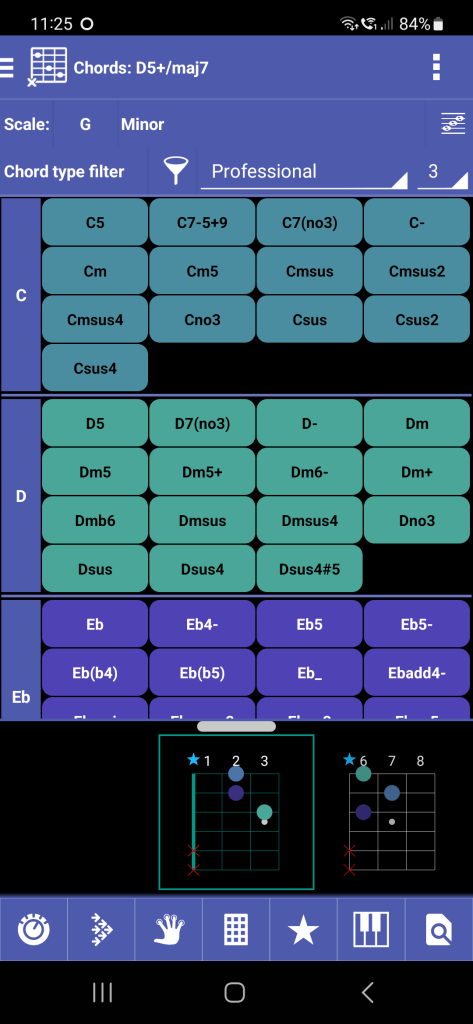Diatonic chords

How to get diatonic chords
If you switch the mode to the Scale-mode on the Chords screen, the diatonic chords of the scale selected on the Scales screen are shown. If you click the Diatonic chords button on the Scales screen, the Chords screen is automatically opened in the scale-mode.
What are diatonic chords?
Diatonic chords are a set of chords that are built using the notes of a scale. In a scale, each note has a corresponding chord that can be built using the notes of the scale. Each note of the scale serves as a root note for a chord. For example, in the key of C major, there are seven different notes (C, D, E, F, G, A, B). It is possible to build a chord on each of these seven notes. These chords are called diatonic chords because they are all built using the notes of the C major scale (see also https://en.wikipedia.org/wiki/Diatonic_scale). Diatonic chords are the basic building blocks of many songs and compositions in Western music. Musicians and composers use these chords to create harmonic progressions and melodies that are pleasing to the ear. Understanding diatonic chords is essential for songwriting, music theory, and music analysis. Diatonic chords are one possibility to find the right chords in our Song Writer.
User interface design
The Chords screen do have two modes. The mode Chord type, which lists the chords in alphebetic order, and the Scale mode. Both modes share nearly the same user interface design. The difference is the chord type selection. The chord type selection for the Scale mode is shown in the image above.
In the upper line, you can see the tonic and the scale. You can click on the Scale button to the right to switch the scale and get the diatonic chords for the that scale.
The next line houses the chord type filter, which is also active in this mode. This means that the number of chords might be limited
- by the chord type spinner, which limits to predefined chord types
- by the spinner for maximal number of notes: This number limits the listed chords to those which are constructed of this maximal number of notes. So you can limit the result e.g. to power chords with just two notes or allow pentachords with five notes. A higher number will result in a larger list.
Below the chord type filter, the diatonic chords are grouped by their root. The color of the chords are following the color scheme binding.